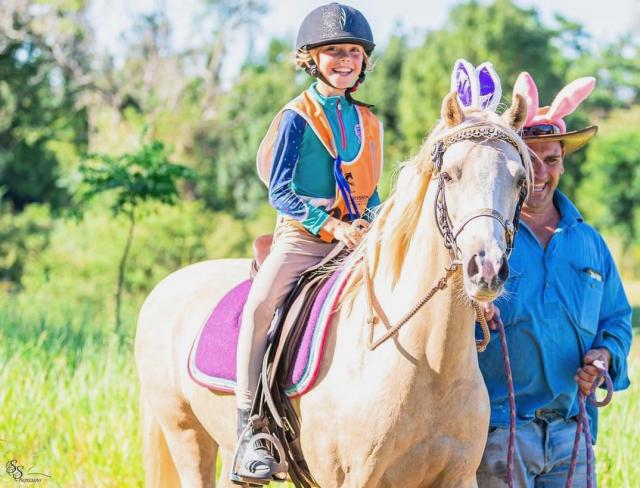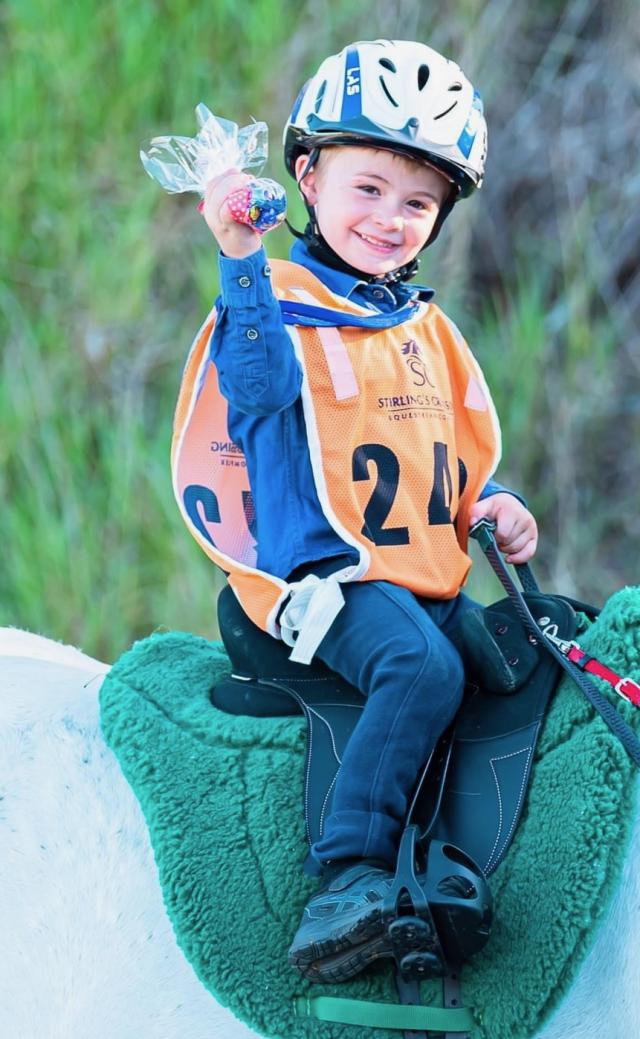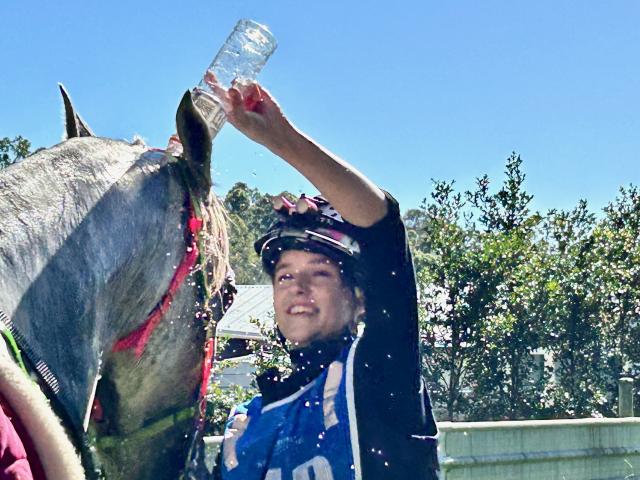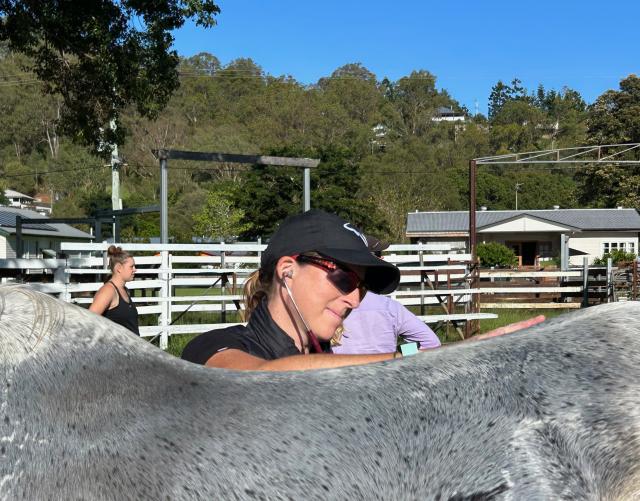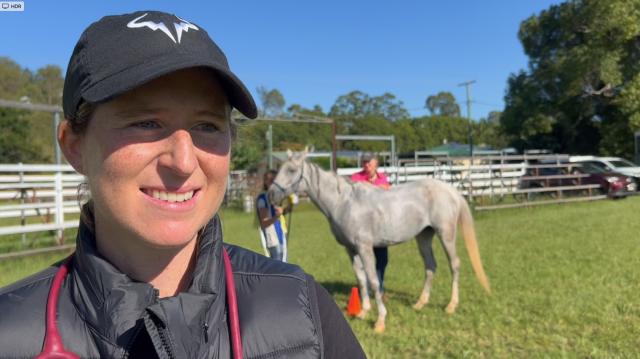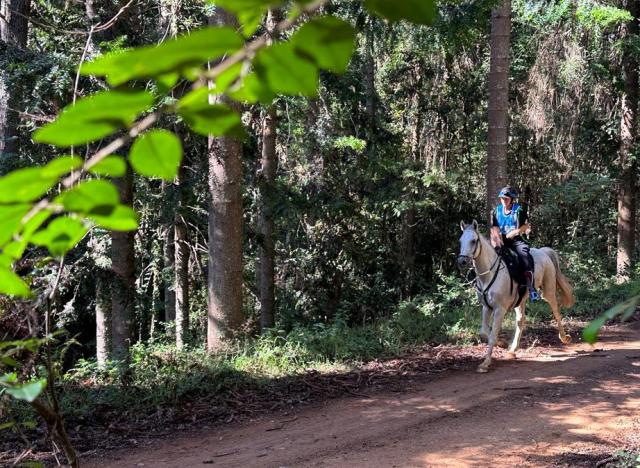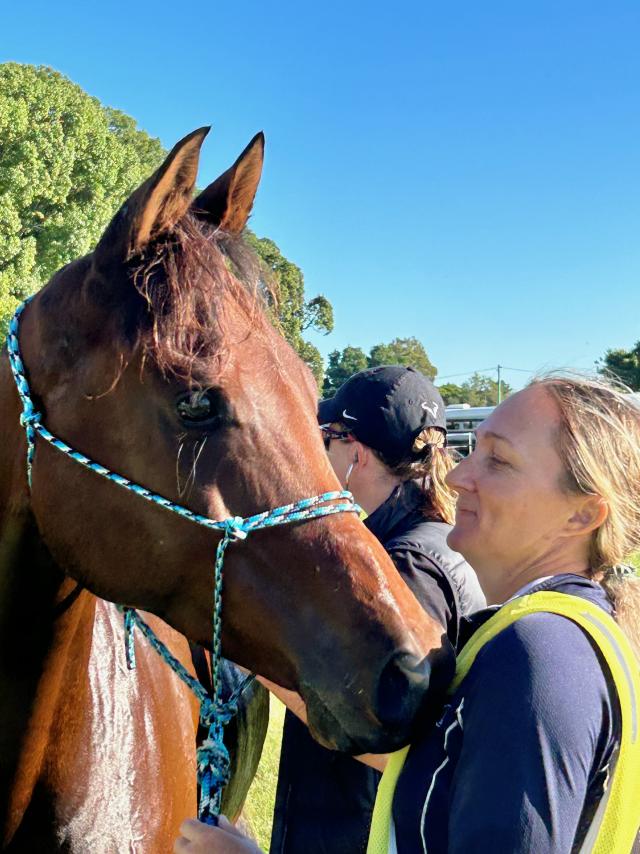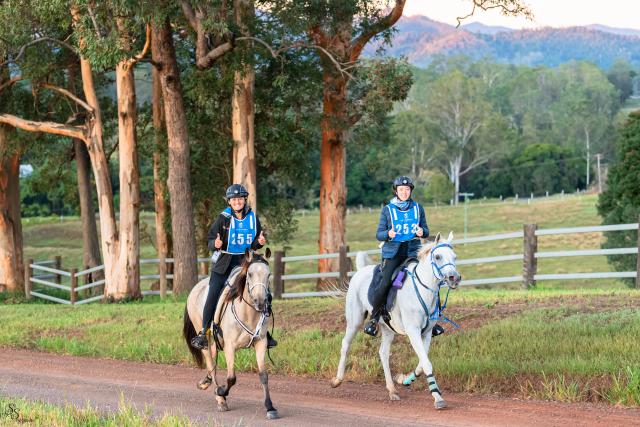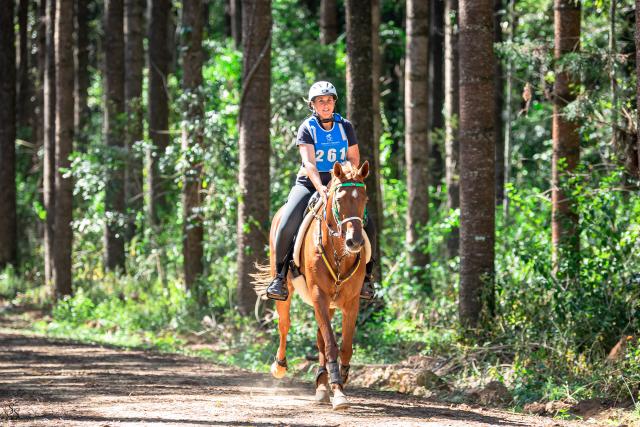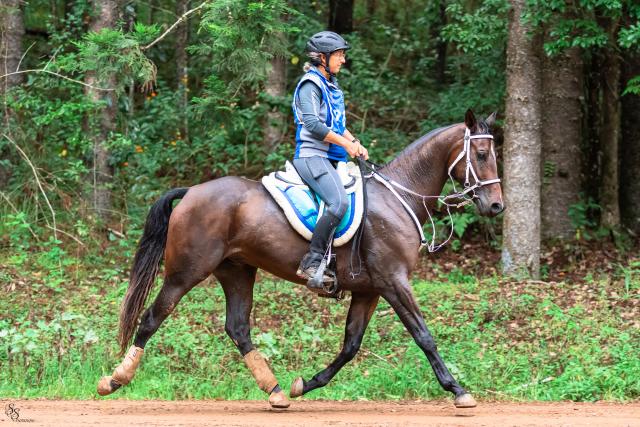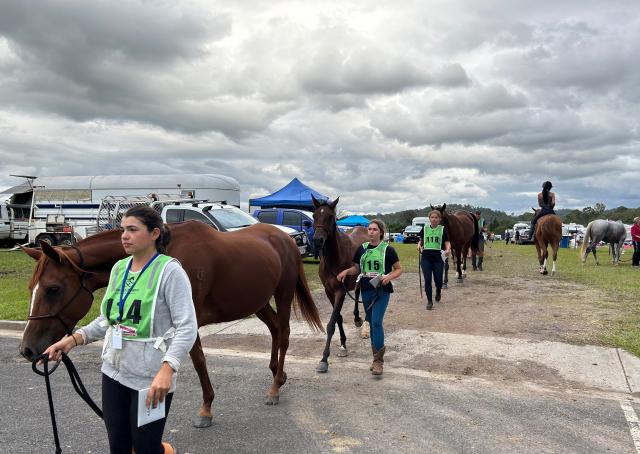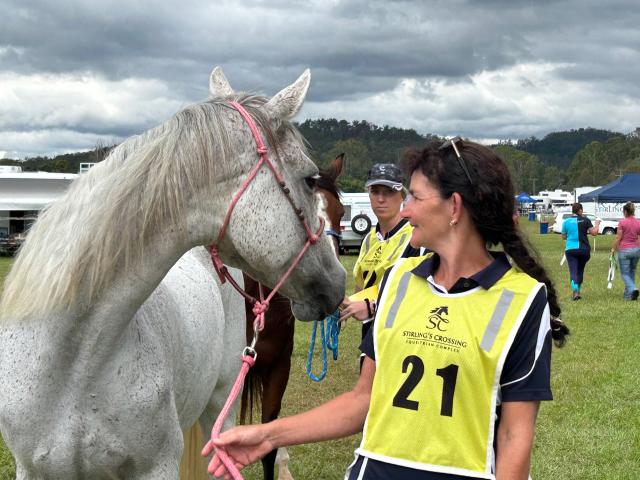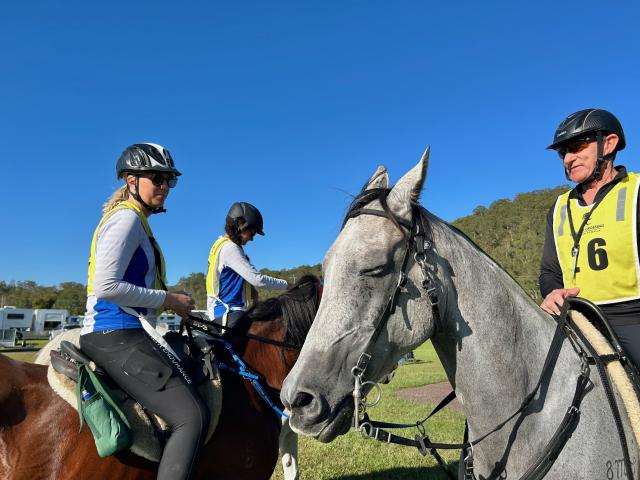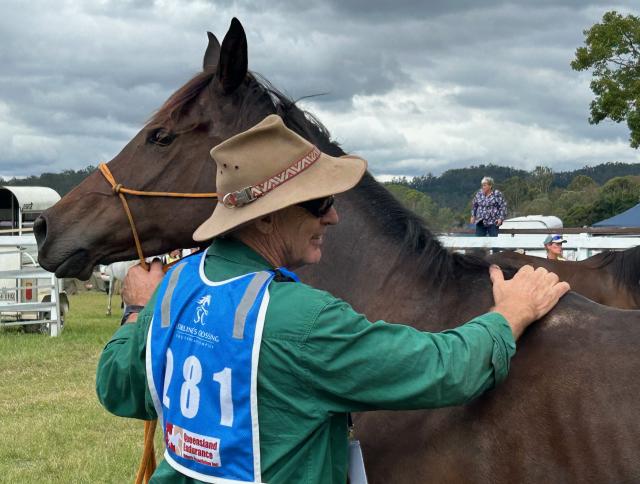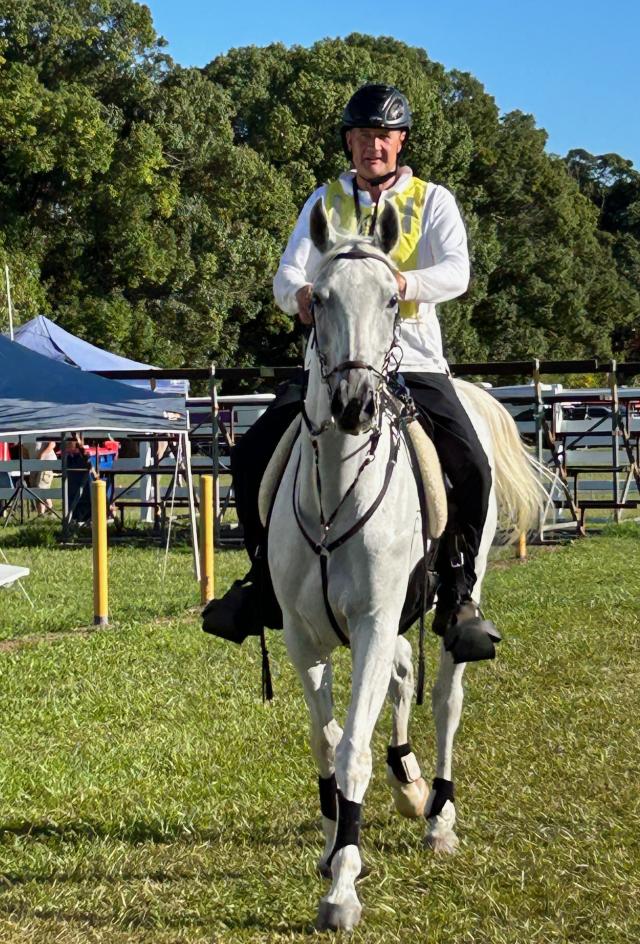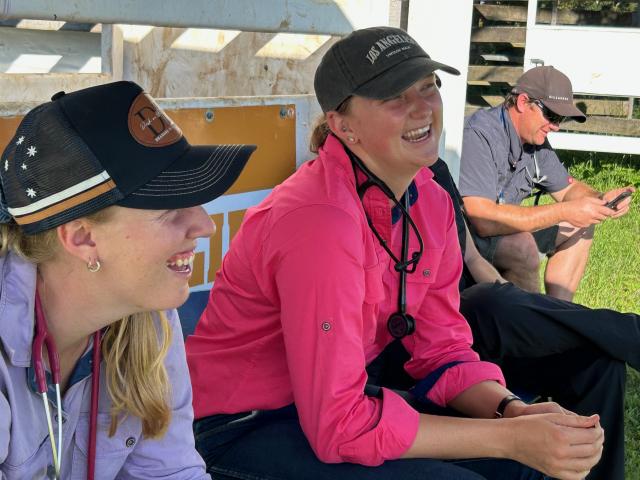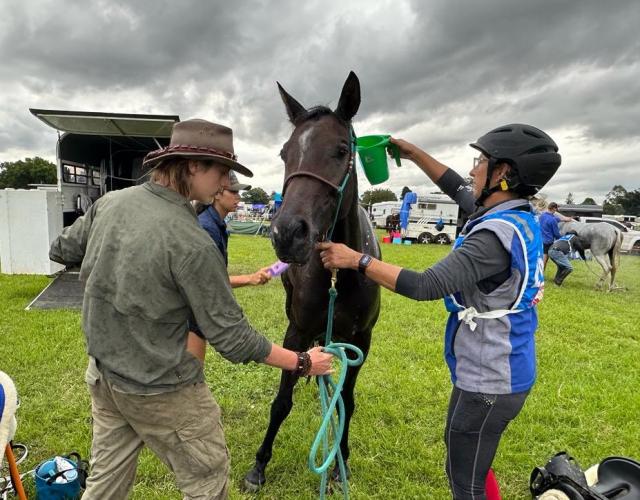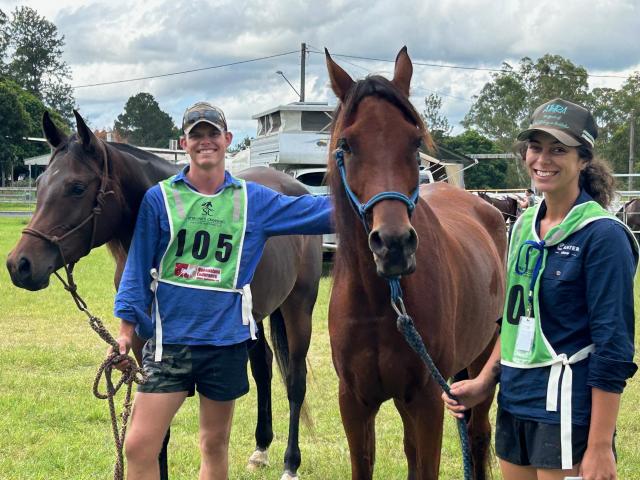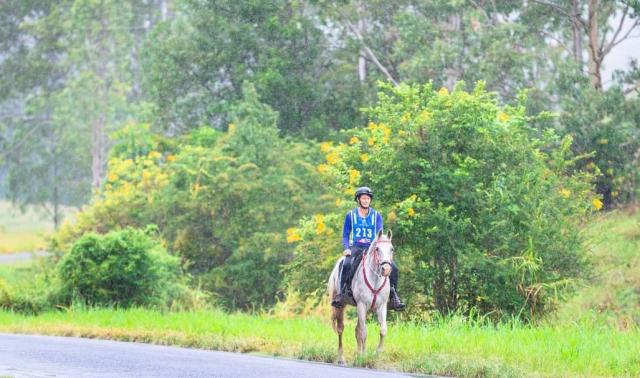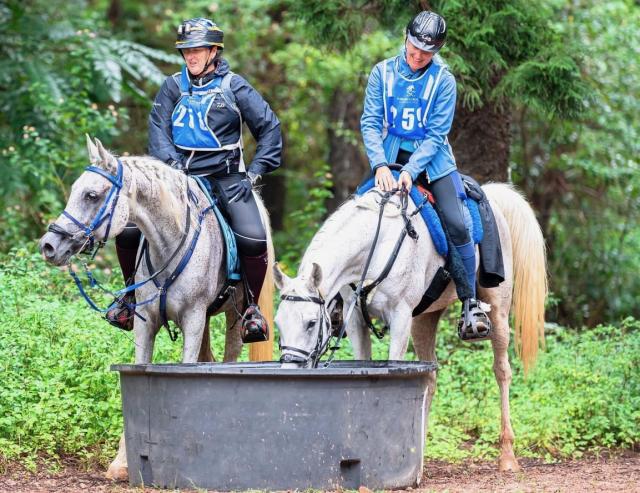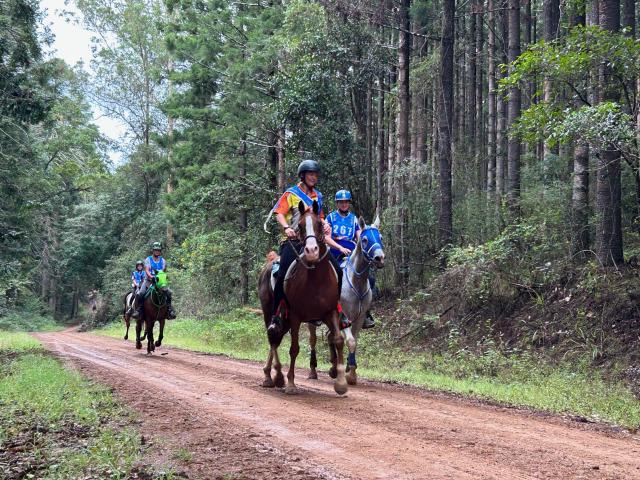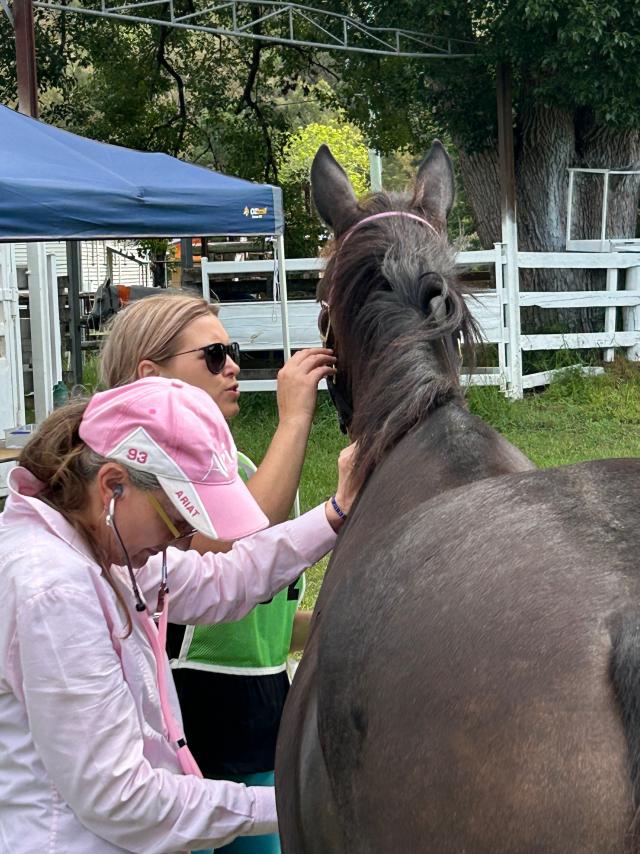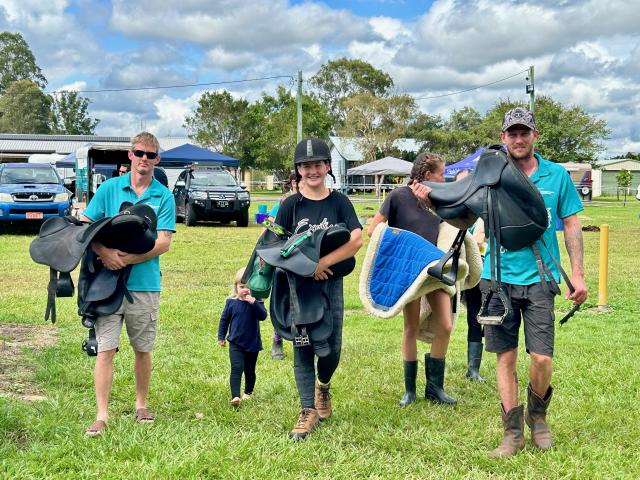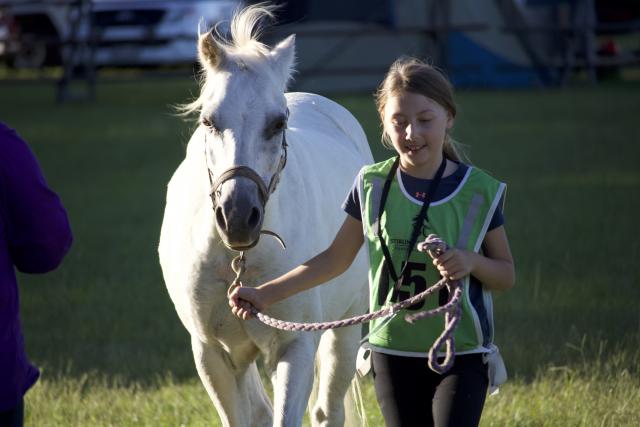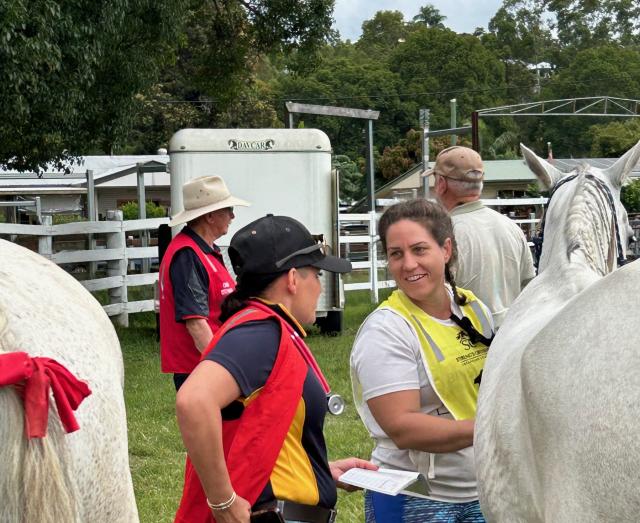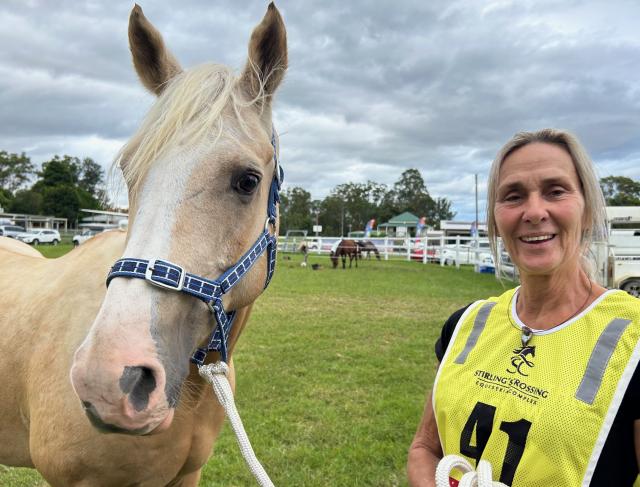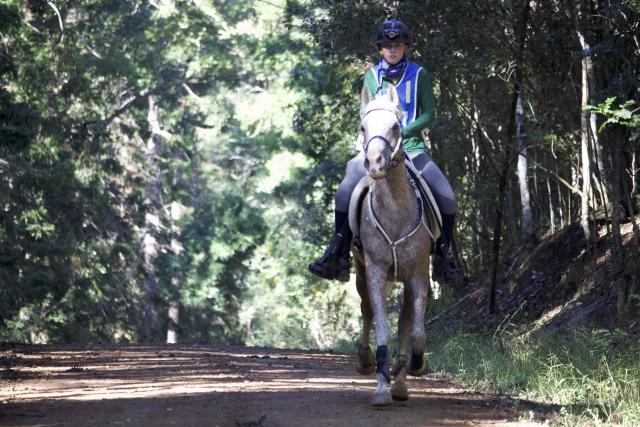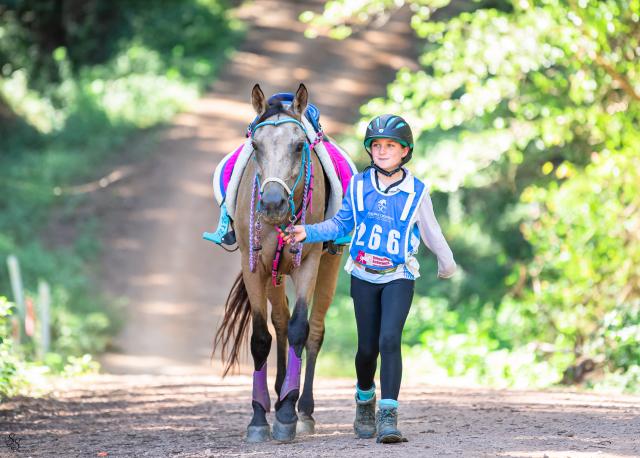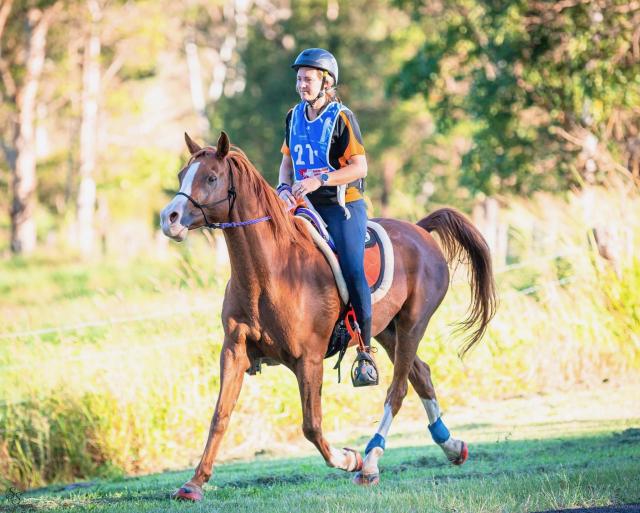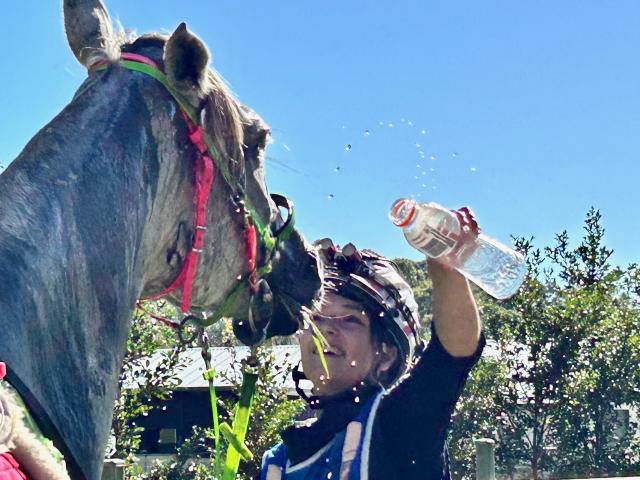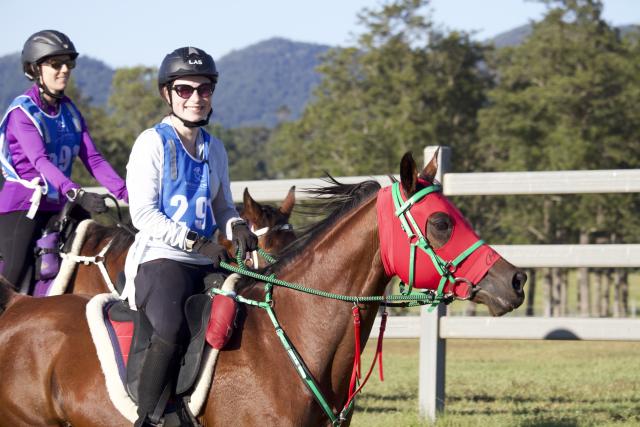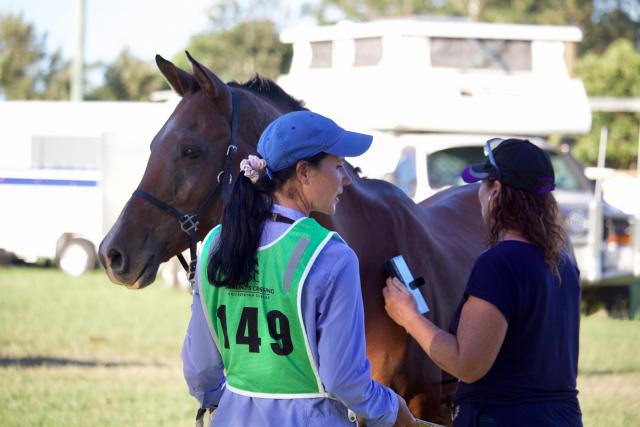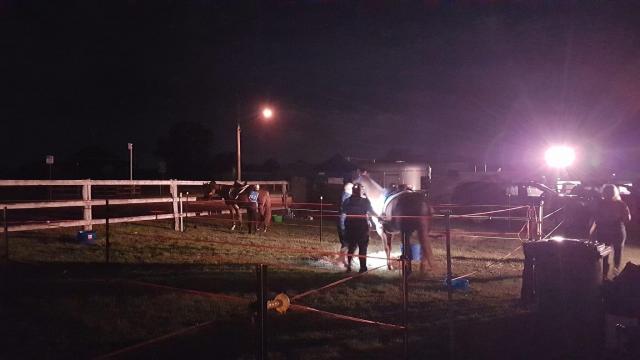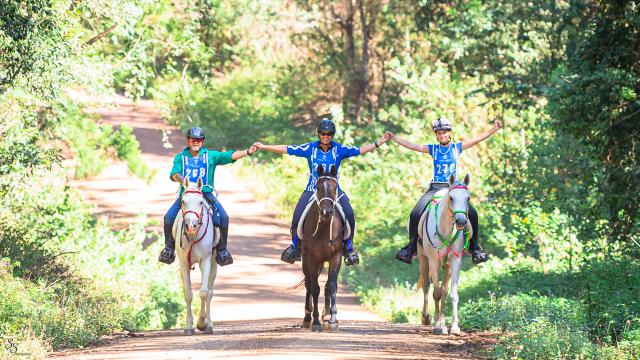
The four-day Easter Endurance Challenge at Imbil lived up to it’s reputation of almost 40 years as an inclusive ride. ERLE LEVEY camped out to experience the challenges of horses and riders.
“It’s a matter of keeping riding even though fatigue is setting in. That is part of a marathon. It is about helping each other, and keeping the horses ready for vetting.’’
Hope, enthusiasm and excitement, achievement, pleasure and pain. Not many events bring together so many competing emotions.
The beauty of nature and a rugged landscape, the physical and mental challenge of the ride, the confidence of community support, and the historical significance of the occasion.
The Far-A-Way Easter Endurance Challenge at Imbil lived up to its reputation of being a good test of horse and rider.
It also underpinned the definition of endurance in that it’s about completing the distance as opposed to competing to win.
There were 11 events from 5am Friday morning to midday on Monday, starting and finishing at Imbil Showgrounds. They included a 5km introductory and 126km elevator ride, in which the rider has the option to ‘elevate’ to a longer distance if both horse and rider feel confident.
What was highlighted in the 323km marathon, ridden over four days, was that proper preparation, planning and consideration of horse and rider is paramount.
The marathon is one of the longest endurance horse riding events in Australia. It is held over four days and in demanding terrain as well as conditions.
The three riders from the Mainstreme stable at Wondai took out line honours in their respective divisions – Mark Liesegang heavyweight, Virginia Barber middleweight and her 16-year-old daughter Georgie Barber, junior.
Far-A-Way provided the variety of conditions that we have come to know since the inception of the ride almost 40 years ago – wet and muddy on the first day, humid and windy on the second, then it settled down to warm dry weather on days three and four.
There were some long climbs – one leg was 1300m in elevation – and dramatic scenery as riders made their way through forestry, across ranges and past rolling farmland.
The Mainstreme team set out quietly before the first light of dawn and supported each other in many ways across the four days.
For Virginia Barber, it was a matter of organisational ability, experience and comprehension, with a focus on completing rather than competing.
“We went there to get the horses through,’’ Virginia said. “Putting ambition ahead of the game.
“The three of us started last and maintained that position on the first day. We were not there to win but get around.
“From experience you understand that to do well you need to get around, get the horses through.
“For Mark it was an achievement. Georgie wanted to prepare the horses for bigger rides.
“To get line honours was a massive bonus.
“The course was challenging. The Far-A-Way has always been known for that.
“Conditions changed throughout the event. We started with pouring rain on the Friday when we got wet right through.
“That makes riding tougher. There is chaffing of the horses as well as the riders.’’
For Mark Liesegang, it was a great achievement as this is only his third year of riding.
“It’s massive to even be at that level,’’ Virginia said.
“It’s a matter of keeping riding even though fatigue is setting in.
“That is part of a marathon. It is about helping each other, and keeping the horses ready for vetting.’’
Virginia is super-pleased with the way the horses are travelling as she plans for more major events this year.
There is the Stirlings Classic at Imbil later this month, the 2023 Tom Quilty Gold Cup – also at Stirlings Crossing at the end of June, then the Winton-To-Longreach ride late in July.
As with all the endurance destinations and events, the history behind them can be as captivating as the experience itself.
Far-A-Way was started at Dealbata, near Kenilworth, in 1986 by a group of riders who were travelling to the Tom Quilty Gold Cup that year.
They had decided to take a team to the first travelling Quilty; to be held in South Australia.
The trip was most successful and there were many and varied discussions around the campfires, with their thoughts of etching a place in endurance by tossing around the idea of a signature ride for Queensland.
Within a few months, the committee was established and the new marathon event was to be known as The Far-A-Way.
It was named with a travelling bushman in mind. Nat Buchanan had travelled across Australia and the indigenous people called him The Faraway Man, because of his travelling habits.
Far-A-Way Riders Association’s Mark Grogan said 271 horses had been nominated for the 11 events at this year’s carnival.
Saturday was the biggest with Day Two of the marathon, the 130km mini marathon, and the 80, 40 and 20km events.
Everyone seemed excited at the opportunity of these big events after the uncertainty of the last few years of Covid and floods.
The marathon riders complete two legs each day of about 40km then rest overnight. It’s a 4am start each day except for the final day when it’s about 2am and the ride finishes by midday.
Sunday is traditionally a quieter day where there is time for Easter bunny dress-ups, especially on the 20km event.
On the Monday when all rides have been completed there is a parade of horses as judges look for the best conditioned mount in each section.
What soon became clear at the Far-A-Way was that despite the busy campsite conditions, there was a sense of community and helping each other.
Newcomers felt supported and guided by more experienced riders, strappers and supporting teams.
You could see that some of the bigger teams were as efficient as a Formula One pit crew.
At the same time you achieved a greater understanding of what the smaller, and sometimes solo riders, had to contend with in terms of preparation, personal nutrition and wellbeing, campsite maintenance, constant exercising of horses and general organisational skills.
The knowledge and understanding required to adapt to the daily environment and changing conditions requires a resilience from the riders and team.
At ride base, everything is at the ready to go … the buckets to feed and to water the horses, the heart rate monitor, the thermometer.
There is emotional support as well as physical support and then there is that team-building of lifting spirits when they can be flagging after four to eight hours out on the course.
Where rain can sometimes create havoc with clothes, rubbing and chaffing. It’s the same with the horse with gear rubbing.
Rider and horse both suffer, depending on the riding conditions – the responsibility is on the rider to be cognisant of their horse’s needs, not just their own.
Out on the course is always the unexpected. A horse can balk at anything, and perhaps everything … from a snake or a stick on the side of the road, to a deer running out in front of them, trail bike riders or motorists – even spectators and photographers that need to be aware the horse is watching them, just as they are watching the horse from a safe distance.
When you spend enough time amidst the camp of supporters and riders you soon hear the stories of other competitors and the resilience required to survive and thrive a marathon of endurance riding.
Sitting with two younger competitors, it became apparent the demanding schedule on them as riders in terms of not only their own marathon competition, but also the assistance, support and help that they offer to the team, and what is expected of them as part of the community of endurance riding, and sometimes their club.
One young rider described the pain that she was in … in her feet and legs, in terms of blisters and muscle fatigue – because during the course of the marathon they would probably walk up to maybe a third of the course. That would be up hills and down, through muddy and slippery sections and even the harder, rocky stretches.
The riders also provided some insight into the challenges of being a younger rider in these competitions and having to trust their own instinct when it came to the condition of the horse, and whether or not, they felt the horse was healthy enough to continue.
Well-being of the horse comes first, and it was evident when in the camp that riders sacrifice themselves to maintain the health and best performance of the mount.
Anyone who thought endurance riding was simply sitting on the horse and enjoying the scenery for four days, time spent among the riders and horses soon corrects your perspective.
What an amazing sport this is.
RESULTS
Best managed horse in the marathon was Keiran Rowley on Rhythm Dancer in the middleweight division. Dancer has now completed 2500km without a vet-out.
Best conditioned heavyweight: Mark Liesegang riding Burralga Thunderbolt. Junior: Georgie Barber riding Burralga Athena.
323km Marathon. 1. Virginia Barber riding Fevers Frederique with a total ride time of 35hrs 39mins. 2. Fiona Fenech and Sweet Honesty Molleeh. 3. Keiran Rowley and Rhythm Dancer;
Heavyweight: Mark Liesegang riding Burralga Thunderbolt, 35:39:12;
Junior: 1. Georgie Barber riding Burralga Athena, 35:39:12; 2. Taylor Grogan riding Anastazia VA; 3. Charlotte Williamson riding De-Sharvarll El Daker.
The 84km event on Saturday saw 44 starters and 81.62 percent completion:
Heavyweight: 1. Shane Butler on Burralga Angelikh, 2. Olly Lochtenberg on Kalkadoon Valour. 3. Arron Turnbull riding Shardell Elderado;
Middleweight: 1. Steve Gray and Shardell Indian Storm. 2. Matthew Sample and Stirling’s Hutcho. 3. Pamela Karner and Flemingo Saphire;
Lightweight: 1. Shelley Chapman on Shanelli-Park Pirouette and Maeve Paten on Box Hill Nitro, equal first. 3. Ute Jordan on Golden Thunder;
Junior: 20 Noah Hoogland and Aloha Blue Opal, 10 Chloe Ronan and All Dressed Up, 35 Jolie McDowall and Shardell Sienna.
The 126km mini marathon: of the 18 starters 78 percent completed.
The 84km event on Monday saw an 87.10 percent completion:
Heavyweight: 1. Corey Nix on Homeleigh Mountain Kosmo; 2. Dave Toft and Allusion TA;
Middleweight: 1. Tracey Eastaughffe and Moondarra Elton; 2. Ken Moir and Soliloquy; 3. Angela Head and Steel Poppy Paris 3;
Lightweight: 1. Ute Jordan on Ayla Emira; 2. Kristie Sheehan riding Ameehs; 3. Nikki Sample and Stirling’s Saffron;
Junior: 1. Indi Else and Shazaam; 2. Mary Duncan and Oso Hey Harley; 3 Noah Hoogland riding Boonara Zebbie.


